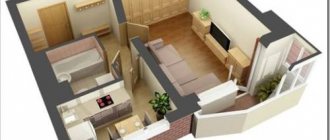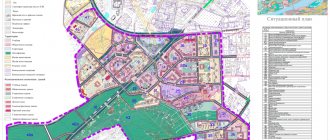The distance between buildings is the norms of housing construction, regulated by SNiP, sanitary and fire safety standards, requirements and instructions. The requirements for maintaining distances between development objects are quite strict and mandatory for compliance on any plot of private land ownership. The law does not prohibit the construction of buildings for special purposes and economic purposes on a land plot. But it provides for maintaining a certain distance between buildings on the lands of individual housing construction and SNT, which is determined by standards developed taking into account all the necessary precautions.
Country building
Land surveying of public lands in SNT in 2021 according to law 217-FZ dated
The law on horticulture introduced new concepts and reduced numerous dacha formations to two forms - a gardening non-profit partnership (SNT) and a garden non-profit partnership (ONT). If previously dacha plots had other names (dacha partnerships, dacha cooperatives and other associations of citizens), then according to the new law they must be renamed either SNT or ONT. The innovations didn't stop there. SNT and ONT have added requirements such as opening a bank account (we talked about the procedure for paying membership fees through a bank earlier), changes to the charter and defining the boundaries of the SNT territory. All this fell on the shoulders of the board in the person of the chairman and his assistants. If we talk specifically about the surveying of the common territory, the law requires that the boundaries of SNT and ONT be marked and defined; for this purpose, a general meeting is convened, a decision is made to carry out surveying of the common lands of the SNT, then a cadastral company is selected and a project for surveying the territory is prepared. (You can check prices for land surveying in your region and choose a suitable company using the online cadastral work calculator.)
Law on horticulture 217-FZ, which came into force on January 1, 2019, affected the procedure for the formation of legal entities - associations of summer residents, gardeners and gardeners. The new law also made adjustments in the field of land surveying of public lands in SNT and ONT. Let’s take a closer look at what innovations have affected the land surveying of SNT’s common lands, why it is needed and whether it is necessary to do it in 2021.
We recommend reading: Civil Law A I Gomola
Northern summer resident - News, Catalog, Consultations
In 1956, the Model Charter of the Gardening Partnership of Workers and Employees was developed and adopted, approved by Resolution of the Council of Ministers of the RSFSR dated October 15, 1956 No. 678. Citizens could choose - individual gardening or a gardening partnership.
". At the same time, for citizens conducting gardening, vegetable gardening or dacha farming individually on the territory of a horticultural, vegetable gardening or dacha non-profit association, the procedure and terms of payment for the use of infrastructure facilities and other common property of the horticultural, vegetable gardening or dacha non-profit association are determined by the parties to the agreement, the conclusion of which is provided for in paragraph 1 of paragraph 2 of Article 8 of the Law. »
16 Apr 2021 klasterlaw 145
Share this post
- Related Posts
- Regional assistance to large families in the Moscow region
- Benefit for low-income singles 2021 Krasnodar
- Until what age are parents responsible for their children?
- How much does it cost to maintain and repair common property in the Moscow region?
How to determine the boundaries of SNT
My plot, which belongs to me as a property, is located within the boundaries of a populated area, which is an administrative-territorial unit of the Russian Federation in accordance with the rules and definitions given in 1) Civil Code of the Russian Federation, Art. 124, 2) Article 2 of Federal Law 131 and 3) Law of the Moscow Region No. 11/2013-OZ “On the administrative-territorial structure of the Moscow Region.”
As can be seen from these links, the statutory documents of a legal entity do not contain information about a certain territory of the SNT (legal entity). It is not excluded that the organization, as a legal entity, has the opportunity to legally acquire certain property. The law does not exclude that such property may be a land plot. At the same time, the rights to such a plot arise from the moment of state registration of such a right (registration of the right to real estate, Article 4 p1 of the Federal Law-122 of July 21, 1997) Since when the non-systemic concept SNT TERRITORY is introduced into circulation, no evidence is provided that the SNT is a certain territorial entity, then we find that when introducing into use the concept of “SNT TERRITORY,” the legislator was talking about a certain space consisting of PROPERTY in the form of a land plot, ownership rights, fixed-term or perpetual use of which are confirmed by the documents available to SNT (certificate or extract from the Unified State Register).
Basic requirements for the placement of buildings
To maintain good neighborly relations, requirements for objects located on the site have been determined. Thus, a mesh fence with a height of at least 1.2 m and no more than 1.8 m is recommended around the perimeter of the site. The installation of another type of fence must be agreed upon with the neighbors and the SNT Board.
The minimum distances from objects on the site to the borders with neighbors were also clarified. So, between the border of neighbors and a garden or residential building there should be at least 3 m, outbuildings or premises for keeping livestock and poultry should be 4 m away from the fence, toilets and cesspools - 2 m, other outbuildings - 1 m. Also the distance of trees is regulated: tall ones should stand further from the border - at a distance of 3 m, medium-sized ones - 2 m, and shrubs can be planted in advance, retreating from the neighbor’s border by a meter.
By the way, if outbuildings are adjacent to the house, the distance to the border with the neighboring plot is measured separately from each object. For example, a house with a garage should be separated from the neighbor’s border by 1-3 meters: the distance from the wall of the house should be at least 3 m, and from the wall of the garage - at least 1 m.
If you buy a small plot, then you need to be prepared to compromise with your neighbors Source imls.ru
Useful little things
First Deputy Chairman of the Moscow Regional Duma, Chairman of the Union of Summer Residents of the Moscow Region Nikita Chaplin Fr.
During the broadcast, the speakers also reminded about maintaining minimum distances between buildings - for example, from a shower, bathhouse and outdoor toilet to a residential or garden house there should be at least 8 m, the same distance should separate the outhouse and compost pit from the drinking well.
Don't forget about the distances between buildings Source pinimg.com
Don't forget about the norms
Roman Larin, General Director of the Moscow Regional BTI, noted the need to comply with urban planning and other standards. “When planning construction on your site, you need to study the requirements for the placement of objects, otherwise you may not only quarrel with your neighbors, but also be drawn into legal proceedings.
Before construction, you need to study the legal regulations and plan the placement of objects on your site. Cadastral engineers can help with this, who will not only draw up a project for the future house, provide for all the indents and parameters of the object, but also help submit a notification of the start of construction to the administration in accordance with the established procedure. Taking into account urban planning standards is a prerequisite for the construction and registration of a house,” he noted.
Where to look for the necessary rules
The Code of Rules SP 53.13330.2019 also contains requirements from other regulations and documents - on the installation of utility networks, fire protection systems, and others. The new set of rules brought the parameters for the development of land for gardening in accordance with 217-FZ “On the conduct of gardening and vegetable gardening by citizens...” of 2019.
Boundaries of the territory of SNT and TSN in a cottage village
In fact, if someone tells you, dear reader, that you can create a TSN for seven people and serve any arbitrary territory with this TSN, for example, the entire Moscow region, then anyone will say that this statement is complete nonsense. With the entire Moscow region, of course, we are going too far in scale. But in reality, in our practice, there were cases when people created a non-profit partnership for three people in one cottage village and served two or three neighboring cottage villages by the same organization (about 2000 plots in total).
Such a partnership can be used to make voluntary contributions or for outright raiding and collecting money from people without legal grounds for this. At the same time, collecting money from defaulters is difficult, since in order to win in court, the defendant-debtor will only need to ask a simple question: “What legal grounds does TSN have for issuing payments to me?”
First of all, the chairman will have to coordinate the work with the gardeners. To do this, it is necessary to hold a general meeting and, through voting, determine whether the owners of the plots are ready to give their consent to the land survey. The voting results are documented in a protocol.
Land surveying can be carried out both on a separate site and on the entire gardening partnership. In the first case, the work must be ordered by the land owner. But if we are talking about surveying the entire territory of SNT, all gardeners will have to pay for the services of surveyors.
, the features of the nature of the territory and the location of natural objects on them are first taken into account , and therefore it will be necessary to slightly change the location of the turning points of the land plots.
- Refusal to consider the case due to the lack of legal authority by the user of the site to protest the passage of borders in this way;
- Refusal to initiate proceedings due to lack of evidence to challenge boundaries. In fact, this means that a person has the opportunity to protest against this particular location of the site, having any documents or data (including witness testimony) indicating that the coordinates of the turning points should be installed in a different location;
- Acceptance of the appeal and rendering a decision in favor of the plaintiff. In such a situation, the court considers all the documents provided, analyzes data that may indicate that the plaintiff is right and makes a decision in his favor;
- Acceptance of an appeal and, on the basis of the considered data, making a decision partially in favor of the plaintiff or in favor of the defendant.
- A plot of land with buildings located on it, for example, a country house, is registered as a property.
- The territory has the correct configuration with a simple topography. Otherwise, it is not possible to take measurements without special instruments.
- There is a fence around it. This fence will become the location of the borders.
- The simplified procedure is applicable if ownership of only the house is registered, then the land remains the property of SNT.
- If there are no disputes with the owners of neighboring plots.
- If another person is involved in the registration procedure, he needs to have a pre-certified power of attorney and a passport.
- A document indicating receipt of ownership rights to a specific plot of land within the SNT. Such documents may include a certificate of ownership or a contract for a purchase and sale transaction, etc.
- Some companies may ask for a foundation agreement.
- Identification document of the applying owner.
We recommend reading: Successes in relocating from old housing to new housing in Saratov 2021
When discussing this issue, the concept of “red lines” is often used.
The red line is the boundary of streets and driveways, which is determined along the border of the gardeners’ land plot.
That is, the red line essentially runs along your fence (along the border of your land plot). If you are planning to build a residential building, then you will need to locate it at least 5 meters from the red line if there is a street right behind the fence and at least 3 meters if there is a passage behind the fence. What is the difference? The street has two lanes, the driveway has one. A residential building (or house) must be at least 5 meters from the red line of streets, and at least 3 meters from the red line of passages.
However, it must be taken into account that for houses located across the passage, the requirements for distances between houses must be met, depending on the materials from which they are built
As for outbuildings, the distance from them to the red lines of streets and driveways should be at least 5 meters.
In addition to fire safety requirements, when choosing the location of buildings on a site, it is necessary to comply with sanitary and living conditions.
Distance between the border of an adjacent plot and:
- Residential building - at least 3 meters;
- Buildings for keeping small livestock and poultry - at least 4 meters;
- For buildings – at least 1 meter;
- Trunks of tall trees - at least 4 meters, medium-sized ones - 2 meters;
- Shrubs - at least 1 meter.
In this case, the distance from the house to the border of the plot is calculated from the base of the house or wall. If the house has elements that protrude beyond the boundaries of the base (wall) by more than 50 cm, then the distance is calculated from their projection onto the ground.
If you plan to build an outbuilding on a garden plot, placing it at a distance of 1 meter from the border of a neighbor’s plot, orient the roof slope towards your plot.
Minimum distances between the buildings themselves for sanitary and living conditions have also been established.
- from a residential building (or house) and a cellar to a latrine and a building for keeping small livestock and poultry - 12 meters;
- to the shower, bath (sauna) - 8 meters;
- from the well to the latrine and composting device - 8 meters.
The above distances must be observed both between buildings on your land plot and between buildings located on neighboring plots.
If the design of your house involves the adjoining of an outbuilding to a residential building, then it is necessary to triple a separate, isolated entrance for small livestock and poultry, and it should be located no closer than 7 meters from the entrance to the house.
In this case, the distance to the border with the neighboring plot is measured separately from each object, for example:
- house-garage (from the house at least 3 meters, from the garage at least 1 meter);
- house-building for livestock and poultry (at least 3 meters from the house, at least 4 meters from the building for livestock and poultry).
If you plan to keep small livestock and poultry on your property, keep in mind that in addition to the requirements for the location of buildings, you must also comply with sanitary and veterinary rules.
The area of the land plot also itself determines how much area of the plot can be occupied by buildings. For example, if your land plot is from 6 to 12 acres, then buildings, paths and platforms should occupy no more than 25-30% of the plot area.
Land surveying of public lands in SNT in 2021 according to law 217-FZ dated
The law on horticulture introduced new concepts and reduced numerous dacha formations to two forms - a gardening non-profit partnership (SNT) and a garden non-profit partnership (ONT). If previously dacha plots had other names (dacha partnerships, dacha cooperatives and other associations of citizens), then according to the new law they must be renamed either SNT or ONT. The innovations didn't stop there. SNT and ONT have added requirements such as opening a bank account (we talked about the procedure for paying membership fees through a bank earlier), changes to the charter and defining the boundaries of the SNT territory. All this fell on the shoulders of the board in the person of the chairman and his assistants. If we talk specifically about the surveying of the common territory, the law requires that the boundaries of SNT and ONT be marked and defined; for this purpose, a general meeting is convened, a decision is made to carry out surveying of the common lands of the SNT, then a cadastral company is selected and a project for surveying the territory is prepared. (You can check prices for land surveying in your region and choose a suitable company using the online cadastral work calculator.)
Article 22 of Law 217-FZ states that SNT, in order to use public territory, must prepare a draft territory layout. The planning project includes a land surveying project. For ONT, a planning project is not required, but the territory will still have to be demarcated; gardeners just need to prepare a land surveying project. The delineation of common lands in SNT is done in order to legally secure their borders and boldly use common lands intended for the needs of all gardeners and gardeners. On public lands, driveways, passages, playgrounds are organized, guards are erected, publicly accessible areas are landscaped and fences are installed to prevent the entry of third parties. These lands and buildings on them are transferred into common shared ownership by SNT members.
SNT land - what is a “garden non-profit partnership”
The abbreviation SNT stands for garden non-profit partnership. Maintenance and provision of electricity and water supply to the plots is carried out by a management company, which is approved by the general meeting of landowners. Every year, the owners of the plots pay membership fees to ensure the activities of this management company, aimed at maintaining the land within the SNT. At general meetings, issues regarding communications (gas supply), arrangement of access roads, security, etc. are also resolved. All positive decisions made by the owners, and further work on the improvement of SNT, are paid for from funds collected from all owners of the plots.
- copy of identity card - passport;
- application to change the status of a land plot;
- documents confirming ownership (sale or lease agreement, land survey plan, registration certificate, cadastral passport);
- if the owner cannot submit an application on his own, a notarized power of attorney for an authorized person;
- a declaration of change in the status of a site, written in free form (the sample and form can be found on the Internet), which comes as an appendix to the main application, and actually duplicates the information contained in it.
- a conclusion issued after an examination of buildings.
The second method is to submit a request for information contained in the Unified State Register of Real Estate (USRN) about the property of interest. The presence of information about boundaries in the extract from the Unified State Register of Real Estate indicates that land surveying was carried out earlier. An extract from the USRN, in the form of which the information will be presented, is an official document.
We recommend reading: Children of the War From What Year Came into Force
If the owner decides to clarify the boundaries of the land plot, it is necessary to contact a cadastral engineer to prepare a boundary plan. Information about cadastral engineers is contained in the state register of cadastral engineers, located on the Rosreestr website in the “Electronic Services” section in the “Register of Cadastral Engineers” tab.
In order to obtain land surveying for public lands in SNT, it is necessary to prepare a draft territory layout. To develop planning and land surveying projects for the common lands of SNT, federal laws and regulations of administrations at the local level apply. For example, in the Moscow region they apply Resolution No. 884/39 dated December 4, 2018, which clearly outlines the procedure for surveying common lands of SNT.
Article 22 of Law 217-FZ states that SNT, in order to use public territory, must prepare a draft territory layout. The planning project includes a land surveying project. For ONT, a planning project is not required, but the territory will still have to be demarcated; gardeners just need to prepare a land surveying project. The delineation of common lands in SNT is done in order to legally secure their borders and boldly use common lands intended for the needs of all gardeners and gardeners. On public lands, driveways, passages, playgrounds are organized, guards are erected, publicly accessible areas are landscaped and fences are installed to prevent the entry of third parties. These lands and buildings on them are transferred into common shared ownership by SNT members.
- a diagram of the location of the land plot on the cadastral plan of the territory (if the boundaries of your plot are not established and there is no land surveying project or a project for the organization and development of the SNT);
- a document confirming your membership in SNT;
- minutes of the general meeting of SNT members on the distribution of land plots, or another document establishing the distribution of land in the SNT, or an extract from such documents.
- about the cadastral number of the common land plot provided to the partnership (if information about such a plot is contained in the Unified State Register of Real Estate) - such information will need to be indicated in the application for the provision of ownership of the plot;
- on approval of a territory surveying project or a project for the organization and development of the territory in relation to a gardening partnership. If such documents exist, familiarize yourself with them; check whether they reflect information about your site; record for yourself who and when these projects were approved.
Determination of the boundaries of the ZAP in SNT when surveying the ZAP
Contacting government agencies authorities for permission. Before this, the chairman of the SNT must convene a general meeting to agree on the surveying of the public territory of the SNT, since the costs of surveying fall on the members of the partnership and directly affect their interests.
2. If the fence has been located inside the demarcated area for more than 15 years, and thus the actual width of the road has been increased at the expense of the area adjacent to it? And in general, when surveying a western land plot, are their boundaries established by the fences of adjacent plots or by their cadastral boundaries?
We recommend reading: Benefits for nursing mothers Voronezh
How to correctly coordinate the boundaries of a site in SNT during land surveying to avoid problems
You can delimit your plot of a larger area than indicated in the documents, but no more than 10%. If the “indentation” becomes larger, you will have to either “play” with the shape of the plot or sue the neighbors (in 80% of cases, the neighbors do not want to pay for land surveying again and correct mistakes).
2. The second option is the presence of adjacent land users when determining boundaries on the ground. This does not guarantee that the site will be correctly demarcated (there remains a risk of an engineer’s error), but it will give you the opportunity to make sure that your neighbor’s opinion on the issue of where his site ends and yours begins does not contradict yours.
When developing a land surveying plan, the following is used:
- Information located in the Unified State Register of Real Estate (USRN).
- Available cartographic materials.
- Land management documentation.
- Territory survey plans.
- Schemes for the location of the site on the land plan according to the cadastre.
- Objections related to the determination of the boundaries, submitted in writing and reasoned.
- A document confirming that all of the above objections have been removed.
- Other materials provided for by the regulatory framework.
The result of agreeing on the location of the borders is enshrined in the Act, the form of which was developed by the relevant department; deviations are not allowed. This document is placed on the reverse side of the sheet, where the boundary plan, implemented through graphics, is located.
How to find out the boundaries of a land plot
The second method is to submit a request for information contained in the Unified State Register of Real Estate (USRN) about the property of interest. The presence of information about boundaries in the extract from the Unified State Register of Real Estate indicates that land surveying was carried out earlier. An extract from the USRN, in the form of which the information will be presented, is an official document.
If the owner decides to clarify the boundaries of the land plot, it is necessary to contact a cadastral engineer to prepare a boundary plan. Information about cadastral engineers is contained in the state register of cadastral engineers, located on the Rosreestr website in the “Electronic Services” section in the “Register of Cadastral Engineers” tab.
How to register land ownership in SNT
If a land surveying project or an organization and development project has not been approved for the territory of SNT, you will need to prepare a diagram of the location of the land plot on the cadastral plan of the territory
. The form of such a scheme and the requirements for its preparation were approved by Order of the Ministry of Economic Development dated November 27, 2014 No. 762. To prepare such a document, we recommend that you contact a cadastral engineer.
If your garden plot turns out to be reserved for state or municipal needs or has limited turnover, it can be provided to you, as a member of SNT, for rent without holding a tender
. In this case, the amount of rent for a land plot should not exceed the amount of land tax established in relation to such a land plot.
What changed
“The Code of Rules deals with the design of the layout and development of SNT lands, as well as the requirements for buildings and structures on this territory. A garden house, a residential building, as well as outbuildings and structures can be built on a garden plot. For example, greenhouses, summer kitchen, bathhouse, sauna, shower, shed or garage, parking garage.
However, now the minimum size of a plot for “gardening” on which you can plant and build is 4 acres (0.04 hectares), previously the minimum size of a plot allocated in SNT was 6 acres,” said the Minister of Property Relations of the Moscow Region Natalya Adigamova .
25 * 16 - the approximate size of the minimum possible plot of 4 acres Source pbs.twimg.com







